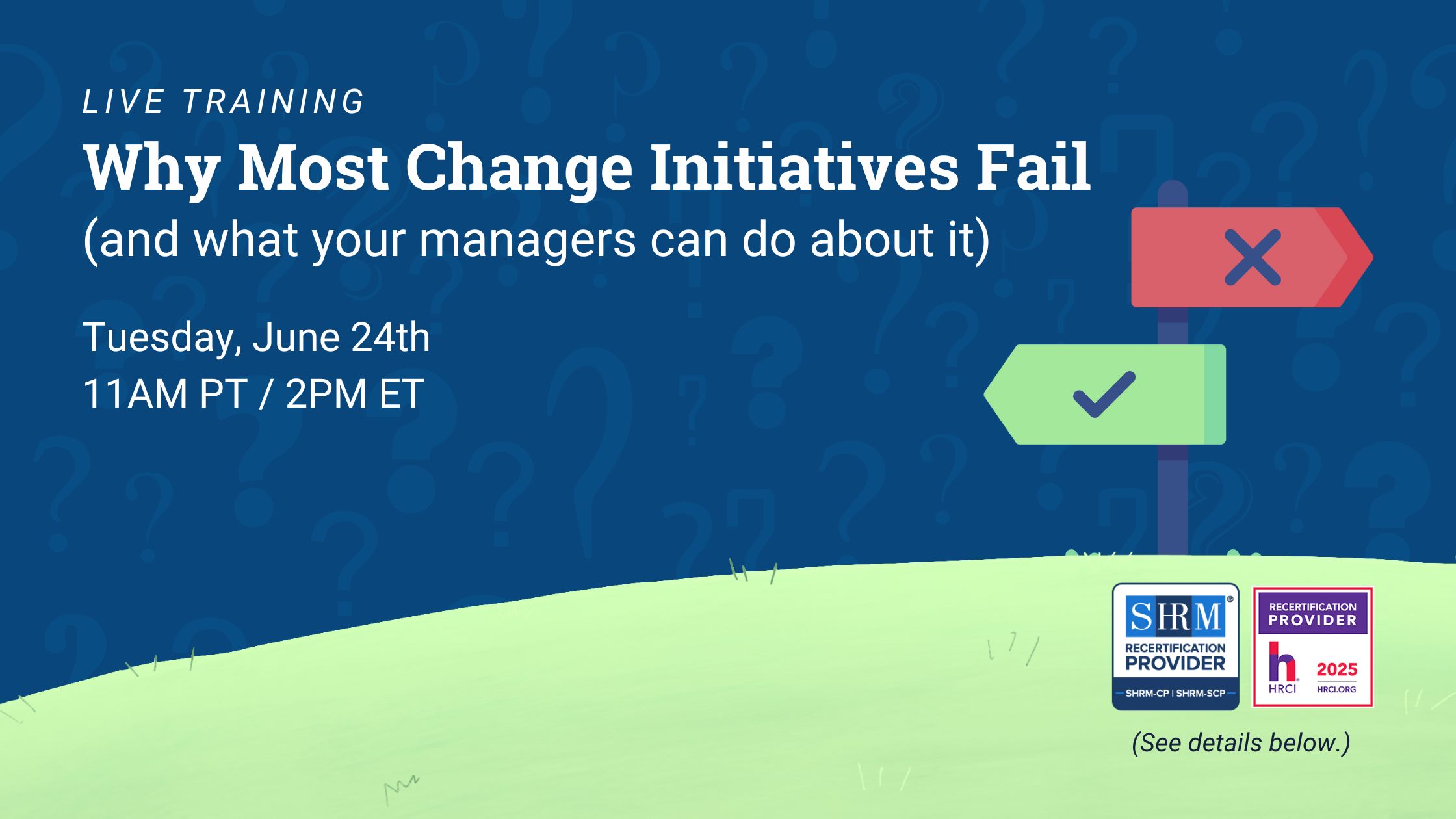One of the reasons employee terminations can feel difficult to manage is that the process has so many steps to keep track of. From putting together a severance package to collecting key cards, an employee termination requires a lot of work and attention to detail from HR professionals.
Forget or mismanage a step, and you could face serious consequences, ranging from wrongful termination lawsuits to embarrassing misuse of company emails by ex-employees. That’s why an employee termination checklist can be helpful to keep track of all the details.
Use the following employee termination checklist to help employees make their exit as smoothly as possible while protecting your company’s resources and reputation.
Employee Termination Checklist
1. Get the details about the employee termination.
Whenever there is a termination of employment, it’s important to note the reason for the event. In the case of a voluntary termination, the employee is making the choice to leave—usually to pursue another job, start a new business, or retire. Involuntary terminations, on the other hand, are initiated by the company. In these cases, the employee is either laid off or fired.
Record the type of termination in the official company and employee files, and follow the specific procedures that apply to each case in the steps that follow.
 2. Ask for a letter of resignation, or prepare a termination letter.
2. Ask for a letter of resignation, or prepare a termination letter.
If the employee is leaving voluntarily, request a written letter of resignation—along with the effective date—for your files. If your company is firing the employee, prepare a termination letter to give the employee at the termination meeting. Some states require written letters, but even if yours doesn’t, providing a letter will help protect you from lawsuits as well as provide the exiting employee with closure. Therefore, it’s an essential step in the employee termination checklist.
3. Notify other departments about the employee termination.
An employee exit requires coordination between departments. Affected departments include:
- The exiting employee’s department: Give the affected department as much time as possible to reassign clients and other duties in preparation for the employee’s departure.
- Human Resources: Your department handles most of the work of exiting an employee. As such, any department facing an employment termination should inform you as early in the process as possible to ensure a smooth transition.
- Payroll: In some states, companies are required to provide their employees with their final paychecks on their last day of work. Let your payroll department know about an employee’s departure well before this final day so that a check can be prepared in time. The last paycheck might also include accrued vacation time and reimbursement for business expenses.
- Information Technology: Alert your IT department about pending employee departures so preparations can be made. Your IT department will need to handle all necessary changes to email accounts and distribution lists, phone extensions, and passwords. IT should also let you know what company-owned electronics should be collected from the departing employee.
- Security: Should circumstances require it, enlist a member of the security team to be present at the termination meeting and to escort the employee out of the building. You may also need security’s help to change access codes or deactivate keycards to your building.
- Facilities management: When an employee departs, your company will need to update phone lists and directories, reassign office mailboxes, and change office nameplates or other signage. Coordinate with facilities management to ensure that these details are taken care of.
- Finance: If the exiting employee held company credit cards or managed other company financial accounts, make sure the finance department knows to cancel or reassign those accounts.
- Legal: Check with legal to see if there are any employment contract issues to keep in mind while terminating specific employees. In addition, if the exiting employee is in the U.S. on a work visa, make sure to cover any related legal requirements and responsibilities your company may have as the employer.
- Administrative: Let the receptionist and other key administrative staff know about staff departures so they are able to reroute calls and inquiries to the appropriate people.
 4. Notify affected employees as required by law.
4. Notify affected employees as required by law.
If your company has 100 or more full-time employees, you’re required by the Worker Adjustment and Retraining Notification (WARN) Act to give written notice to employees 60 days before the date of a mass layoff.
Layoffs, which generally involve letting go of multiple employees, pose additional challenges that require keeping track of more legal, financial, and administrative issues. Download Intoo’s Reduction-In-Force Checklist; this is an employee termination checklist specific to layoffs that provides a 16-step guide to help you successfully manage a reduction-in-force.
5. Prepare a severance package and employee separation agreement.
If your company is going through a layoff, it is customary to offer affected employees a severance package. Even though your company is not required to provide severance pay to exiting employees, many companies do so to protect brand reputation and foster goodwill.
Another reason a severance package is essential to include in your employee termination checklist is that this package can help mitigate lawsuits. In exchange for receiving the package, you can ask the departing employee to sign an employee separation agreement. By signing, the employee agrees not to sue the company for wrongful termination or additional severance benefits. An employee separation agreement might also include a non-compete clause or non-disclosure agreement.
A severance package generally includes severance pay—usually based on the number of years the employee has worked for the company and the seniority of the employee’s position—as well as continuation of health benefits and other perks. Take care to follow any existing severance policies, individual contracts, or labor agreements.
6. Engage outplacement services.
In the case of involuntary terminations, companies often offer departing employees an outplacement package. These packages are intended to assist employees in finding a new job quickly, and include services such as career coaching and resume review. Usually, companies engage an outplacement service provider to offer these services.
Providing outplacement services helps companies save money on unemployment claims and mitigate the threat of lawsuits. Employees who receive outplacement help are also likely to retain a positive image of their former employer, which helps companies to retain a positive brand reputation.
7. Gather materials for the termination meeting.
In the case of a voluntary termination, a formal termination meeting isn’t necessary. Still, setting up a time to meet with the departing employee to take care of final details and conduct an exit interview will make the process easier to manage. For voluntary terminations, plan a termination meeting where you’ll inform the employee that they are being fired or laid off.
In either case, employee termination checklist items you’ll need to bring to the meeting include:
- final paycheck
- employee files
- a documented history of performance issues in the case of a firing
- COBRA notice (If your company has 20 or more employees and offer group health insurance, you must allow terminated employees to continue their coverage for a limited period of time.)
- notices about other insurance or benefits, including supplemental insurance, life insurance, Flexible Spending Accounts (FSA), Health Savings Accounts (HSAs), and Dependent Care Assistance Programs (DCAP), if applicable
- retirement plan options
- severance package and severance check, if applicable
- employee separation agreement
- non-compete or non-disclosure agreements, if applicable
- information about outplacement services
8. Hold the termination meeting.
For involuntary separations, schedule and hold a termination meeting as the final step in your employee termination checklist. A prepared script can help you make sure you cover all the details while keeping the conversation on track. INTOO’s Layoff Notification Guide offers a handy sample script. At this meeting, you’ll also answer questions the exiting employee may have, get key documents signed, give the employee their paycheck and other materials you’ve prepared, and reclaim company property like electronics, uniforms, keys, and ID cards.
An employee’s departure can make for an emotional and challenging time. While goodbyes are rarely easy, having an employee termination checklist in place can at least help you better manage the logistical details of the process, making for a smoother transition. INTOO’s outplacement program helps employees transition to new jobs through one-on-one, on-demand coaching from premier career counselors, resume reviews, and other career services. Learn more about how our outplacement program can benefit your company when you’re transitioning employees.


 2. Ask for a letter of resignation, or prepare a termination letter.
2. Ask for a letter of resignation, or prepare a termination letter. 4. Notify affected employees as required by law.
4. Notify affected employees as required by law.








